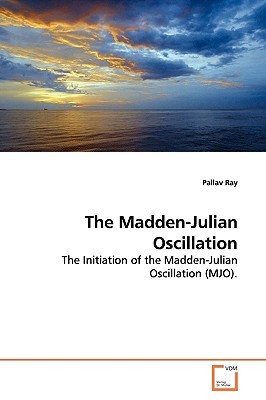
- We will send in 10–14 business days.
- Author: Pallav Ray
- Publisher: VDM Verlag
- ISBN-10: 3639130545
- ISBN-13: 9783639130546
- Format: 15.2 x 22.9 x 0.9 cm, softcover
- Language: English
- SAVE -10% with code: EXTRA
Reviews
Description
A tropical channel model was constructed to study the long-standing problem of the initiation of the Madden-Julian Oscillation (MJO). Two MJO cases were studied through numerous sensitivity tests. These tests demonstrated that the simulated MJO initiation was critically dependent on the time dependent lateral boundary conditions from the reanalysis. The mechanisms of extratropical influences were further explored, which showed the importance of momentum transport at the lower troposphere and wave activities at the upper troposphere. The dynamics of the MJO and its dependence on the mean state were also studied using multi-year simulation of a nested regional climate model. In short, this study has shown that the extratropical influences can be an efficient mechanism for the MJO initiation and calls for further research attention to this mechanism that has been somewhat neglected by mainstream MJO research. This work should be useful to researchers in tropical dynamics and thermodynamics and numerical modeling. It would also be helpful to students who are studying Meteorology, Atmospheric Sciences, or Physical Oceanography.
EXTRA 10 % discount with code: EXTRA
The promotion ends in 17d.06:30:00
The discount code is valid when purchasing from 10 €. Discounts do not stack.
- Author: Pallav Ray
- Publisher: VDM Verlag
- ISBN-10: 3639130545
- ISBN-13: 9783639130546
- Format: 15.2 x 22.9 x 0.9 cm, softcover
- Language: English English
A tropical channel model was constructed to study the long-standing problem of the initiation of the Madden-Julian Oscillation (MJO). Two MJO cases were studied through numerous sensitivity tests. These tests demonstrated that the simulated MJO initiation was critically dependent on the time dependent lateral boundary conditions from the reanalysis. The mechanisms of extratropical influences were further explored, which showed the importance of momentum transport at the lower troposphere and wave activities at the upper troposphere. The dynamics of the MJO and its dependence on the mean state were also studied using multi-year simulation of a nested regional climate model. In short, this study has shown that the extratropical influences can be an efficient mechanism for the MJO initiation and calls for further research attention to this mechanism that has been somewhat neglected by mainstream MJO research. This work should be useful to researchers in tropical dynamics and thermodynamics and numerical modeling. It would also be helpful to students who are studying Meteorology, Atmospheric Sciences, or Physical Oceanography.


Reviews